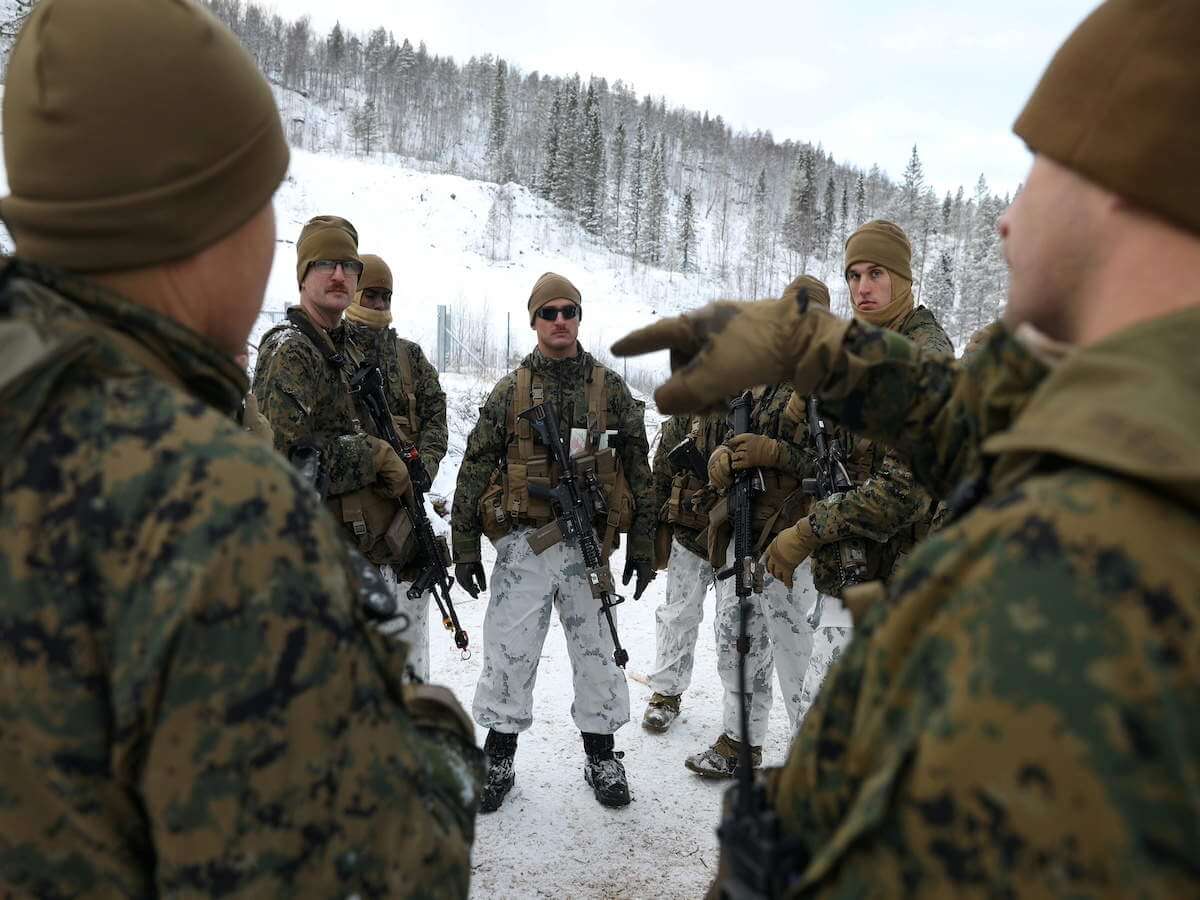On Friday, Norway and the United States (US) signed the Supplementary Defence Cooperation Agreement, which lays down details on rules governing the American military’s activities in the country. The deal was concluded by the Norwegian Prime Minister Erna Solberg-led minority government and now awaits approval from the country’s Parliament.
According to a statement by the Norwegian government, the deal would allow American authorities to build military infrastructure at three airfields and one naval base in the country. It enables the American military forces to use “the Rygge air base for fighter jets, the Sola base for in-flight refuelling, the Evenes base for maritime surveillance and the naval logistics base in Ramsund.” However, the statement clarified that this would not result in separate American bases in the country, which is in accordance with Norway’s prohibition of foreign bases on its soil during peacetime.
Celebrating the accord, the government said, “The agreement regulates and facilitates US presence, training and exercises in Norway, thus facilitating rapid US reinforcement of Norway in the event of crisis or war.” Moreover, Norwegian Foreign Minister Ine Eriksen Soereide said, “Our cooperation with our allies is under continuous development. The agreement reaffirms Norway’s close relationship with the US and confirms Norway’s key position on the northern flank of NATO.”
US Secretary of State Antony Blinken also supported the sentiments of the Norwegian leaders, saying that the agreement is reflective of the country’s “commitment to reaffirming and reinvigorating America’s alliances to meet common security challenges and protect shared interests and values”. This, he added, would bolster “improved interoperability” between the two sides and allow them to work closely on regional and global issues of mutual importance.
The accord is an attempt to counter the Russian military’s activities along the Norwegian coast, which has been a cause for concern for NATO allies. Russia has not only deployed its Northern Fleet submarines along the Norwegian Sea but has also developed submarines with cruise missiles that have enhanced strike capabilities. Moreover, on April 7, new satellite images showed Russia beefing up its military presence on the Arctic coastline by engaging in a massive build-up of military bases and hardware in the region. According to a report by CNN, Moscow has been using the newly ice-free area to test “super-weapons” like the Poseidon 2M39 torpedo, and is further hoping to use its military might to secure its northern coast and open up a “key shipping route from Asia to Europe.”
Nevertheless, the Kremlin has long maintained that it does not have any intention of threatening any country through its activities in the Arctic. Earlier this month, the country’s Foreign Ministry spokesperson, Maria Zakharova reiterated this stance, adding that the peace in the Arctic is only threatened by American military activities. She said, “NATO and its member states, including non-Arctic nations, stage provocations there, and it happens on an increasingly regular basis”.
Hence, it comes as no surprise that this deal, which strengthens the 70-years long defence cooperation between Norway and the US, is likely to irk Russia, with whom Norway has maintained a unique relationship. Norway is the only member of NATO that shares a border with Russia. Hence, regional cooperation between the two is inevitable and required because of cross-border movement and trade relations. For instance, Russia is one of the most significant trade partners of Norway’s seafood industry. However, Vladimir Putin’s re-election in 2012 led to a downfall in Norwegian-Russian cooperation along their border, caused in part by Putin’s crackdown on NGOs and civil rights in the region. These tensions were later fuelled by the Russian government’s decision to annex Crimea in 2014. Since then, bilateral ties have worsened further as a result of NATO’s growing anti-Russian sentiments. In 2018, Norway conducted a NATO military exercise and hosted over 50,000 participants from 31 countries in the Kirkenes region, making it the biggest such drill since the Cold War. Furthermore, both sides have enhanced their military presence along the border and engaged in frequent military manoeuvres.
Norway Approves Deal to Increase US Military Presence in the Country
The US and Norway, both NATO members, signed a defence cooperation deal that will allows the US to build military infrastructure on Norwegian soil and allow for more joint training exercises.
April 19, 2021

SOURCE: REUTERS
